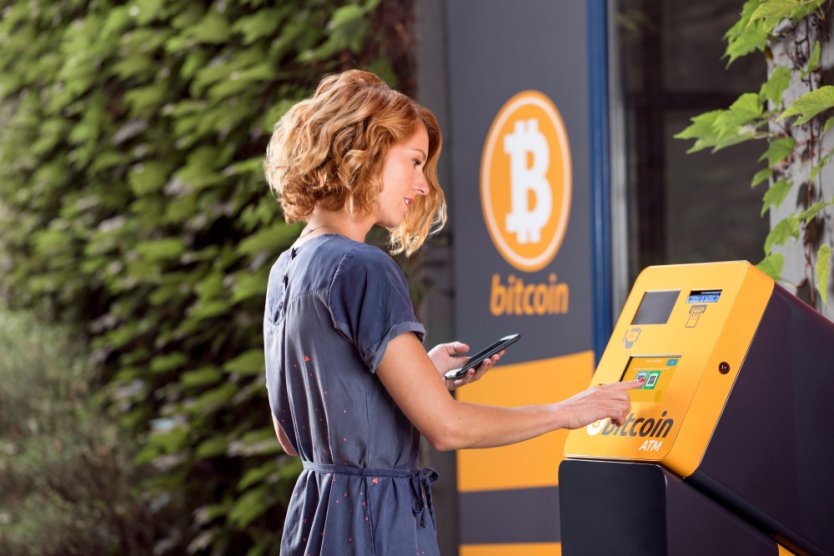
Over the past six months, bitcoin ATM company Bitcoin Depot has more than tripled its machine count across the U.S. and Canada, according to a press release. The expansion was fueled by an appetite for BTC from a wide range of communities in North America, especially the unbanked. Bitcoin ATMs increase convenience by enabling physical purchases with cash — without requiring the customer to have a bank account — but also entail high costs.
“It’s no doubt the crypto market has captured mainstream interest, and the demand from consumers and retail industry giants continues to grow,” said Brandon Mintz, president and CEO of Bitcoin Depot, per the release. “This gives us a greater opportunity to expose Bitcoin Depot ATMs to individuals seeking convenient access to alternative financial services and cryptocurrency.”
In July, Bitcoin Magazine detailed the steep increase in bitcoin ATM kiosks in the U.S., which had nearly doubled year over year, indicating a growing demand from retail investors seeking convenience. Since then, the number of machines has grown by more than 11% to 42,266 bitcoin ATMs on American soil, according to the independent research website How Many Bitcoin ATMs.
The rising popularity of bitcoin, paired with the assurances it can provide regular people as central bank monetary policies erode their purchasing power, has led to kiosks popping up at gas stations and grocery stores.
Also in July, convenience store chain Circle K partnered with Bitcoin Depot to bring bitcoin ATMs to its stores in the U.S. and Canada. At the time, the franchise had already installed over 700 machines.
”We’re thrilled to achieve a new and tremendous milestone with 5,000+ crypto ATMs on the heels of Bitcoin Depot’s five-year anniversary and a long-term partnership with Circle K,” Mintz added.
However, the increased convenience of purchasing bitcoin through ATMs carries additional costs in the form of high fees and often know-your-customer (KYC) procedures. Some operators charge as much as 30% in fees for every purchase at their ATM. Identification procedures range from phone number verification for smaller purchases to ID submission for bigger ones.
Over the past six months, bitcoin ATM company Bitcoin Depot has more than tripled its machine count across the U.S. and Canada, according to a press release. The expansion was fueled by an appetite for BTC from a wide range of communities in North America, especially the unbanked. Bitcoin ATMs increase convenience by enabling physical purchases with cash — without requiring the customer to have a bank account — but also entail high costs.
“It’s no doubt the crypto market has captured mainstream interest, and the demand from consumers and retail industry giants continues to grow,” said Brandon Mintz, president and CEO of Bitcoin Depot, per the release. “This gives us a greater opportunity to expose Bitcoin Depot ATMs to individuals seeking convenient access to alternative financial services and cryptocurrency.”
In July, Bitcoin Magazine detailed the steep increase in bitcoin ATM kiosks in the U.S., which had nearly doubled year over year, indicating a growing demand from retail investors seeking convenience. Since then, the number of machines has grown by more than 11% to 42,266 bitcoin ATMs on American soil, according to the independent research website How Many Bitcoin ATMs.
The rising popularity of bitcoin, paired with the assurances it can provide regular people as central bank monetary policies erode their purchasing power, has led to kiosks popping up at gas stations and grocery stores.
Also in July, convenience store chain Circle K partnered with Bitcoin Depot to bring bitcoin ATMs to its stores in the U.S. and Canada. At the time, the franchise had already installed over 700 machines.
”We’re thrilled to achieve a new and tremendous milestone with 5,000+ crypto ATMs on the heels of Bitcoin Depot’s five-year anniversary and a long-term partnership with Circle K,” Mintz added.
However, the increased convenience of purchasing bitcoin through ATMs carries additional costs in the form of high fees and often know-your-customer (KYC) procedures. Some operators charge as much as 30% in fees for every purchase at their ATM. Identification procedures range from phone number verification for smaller purchases to ID submission for bigger ones.























